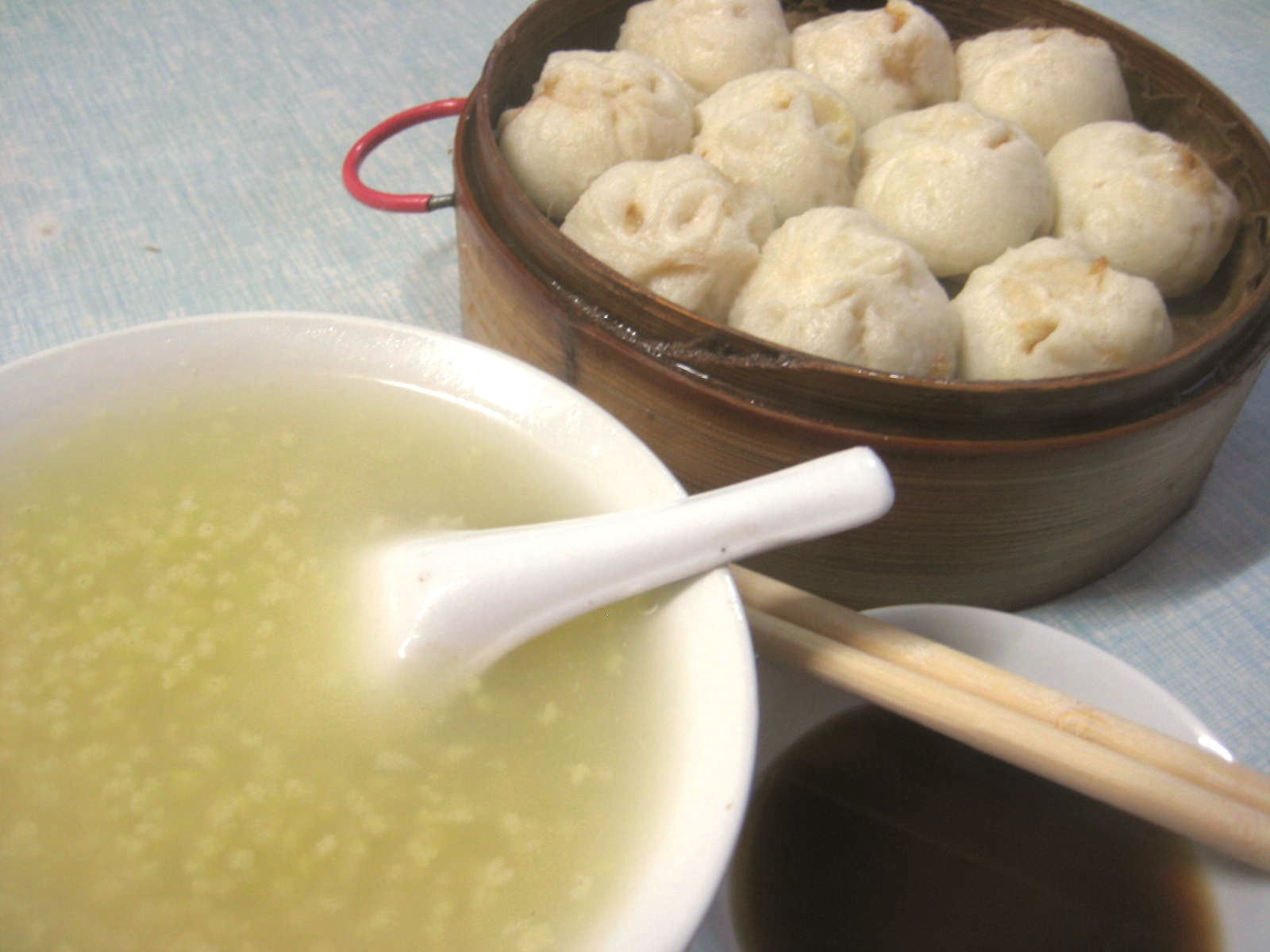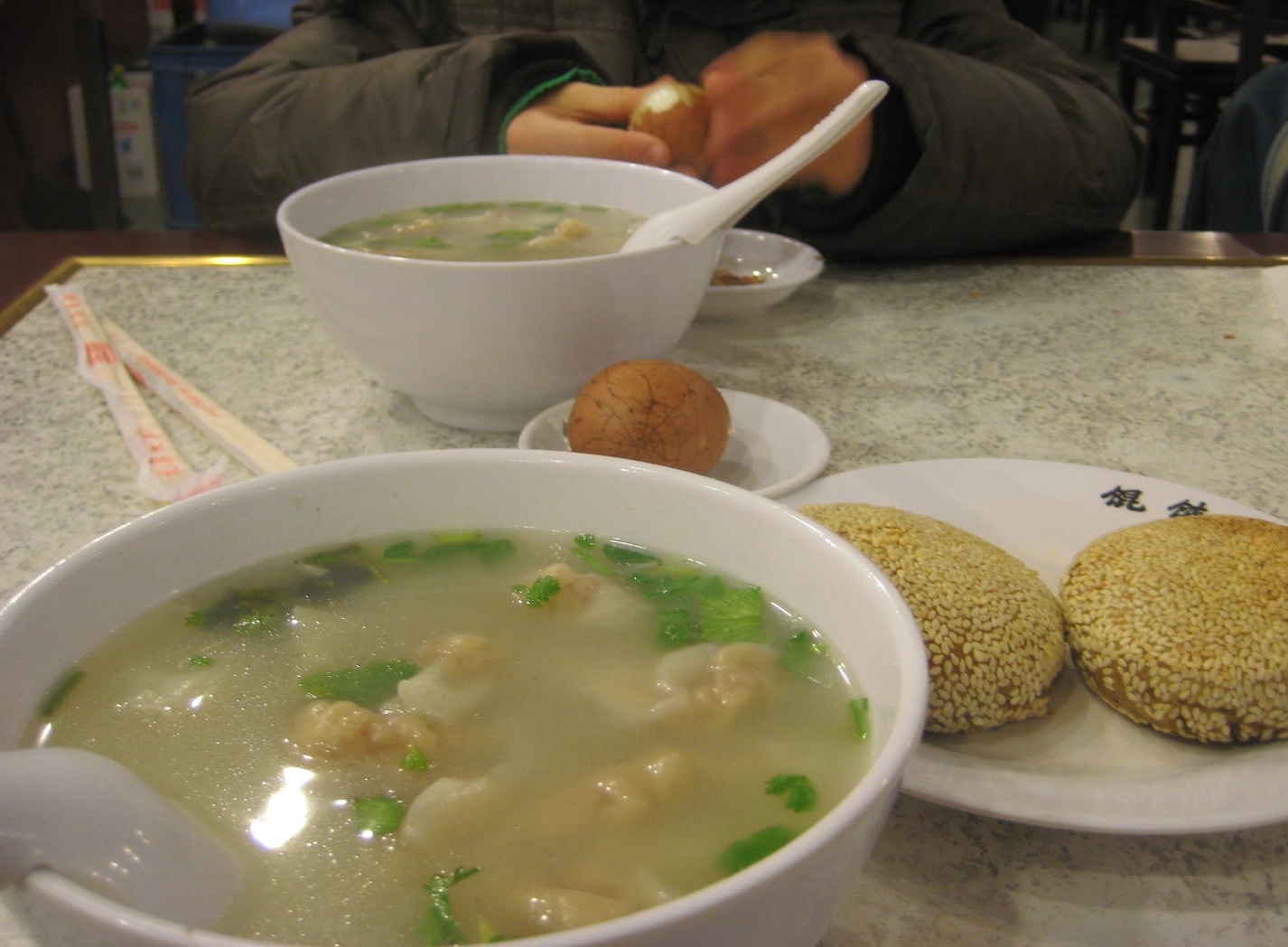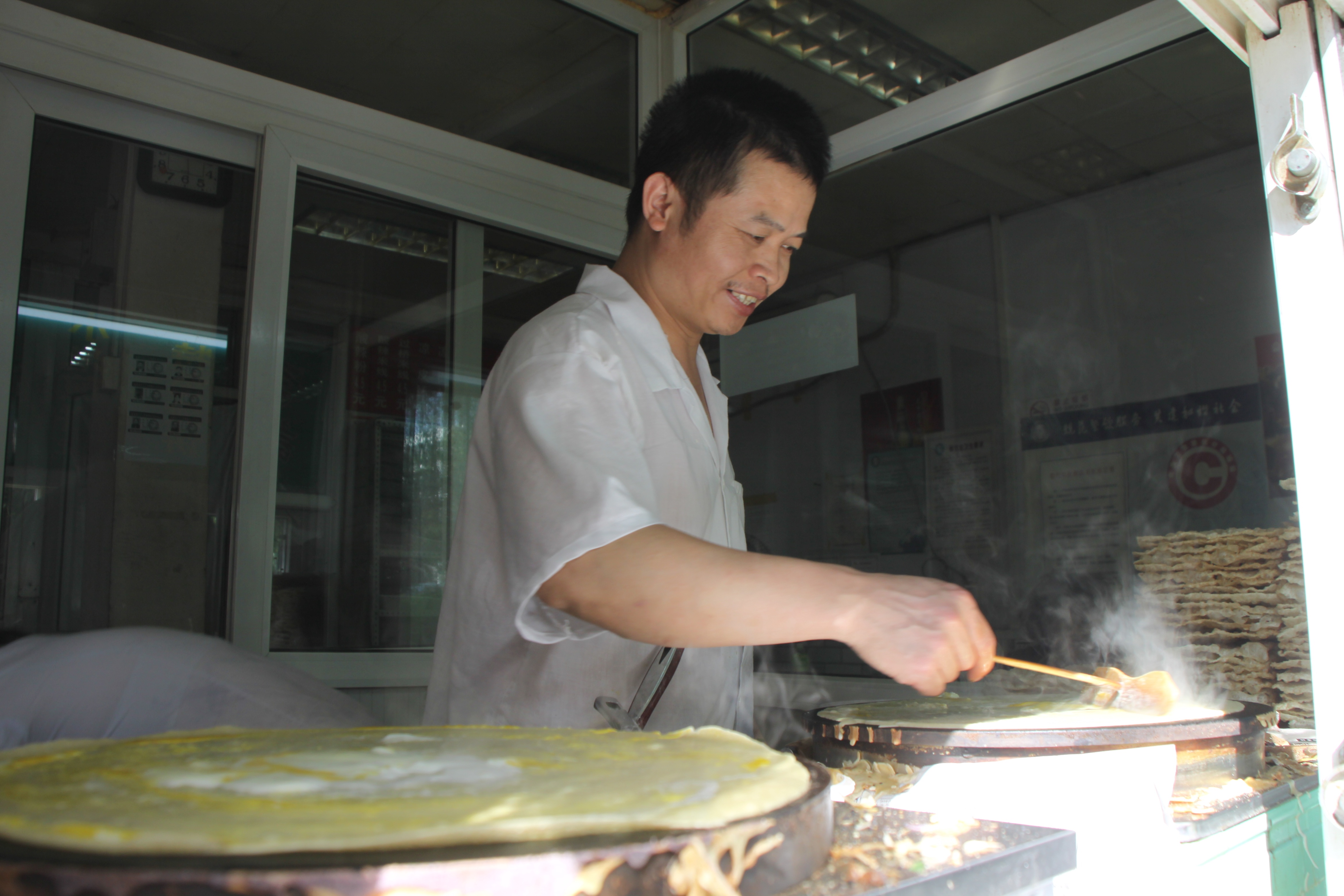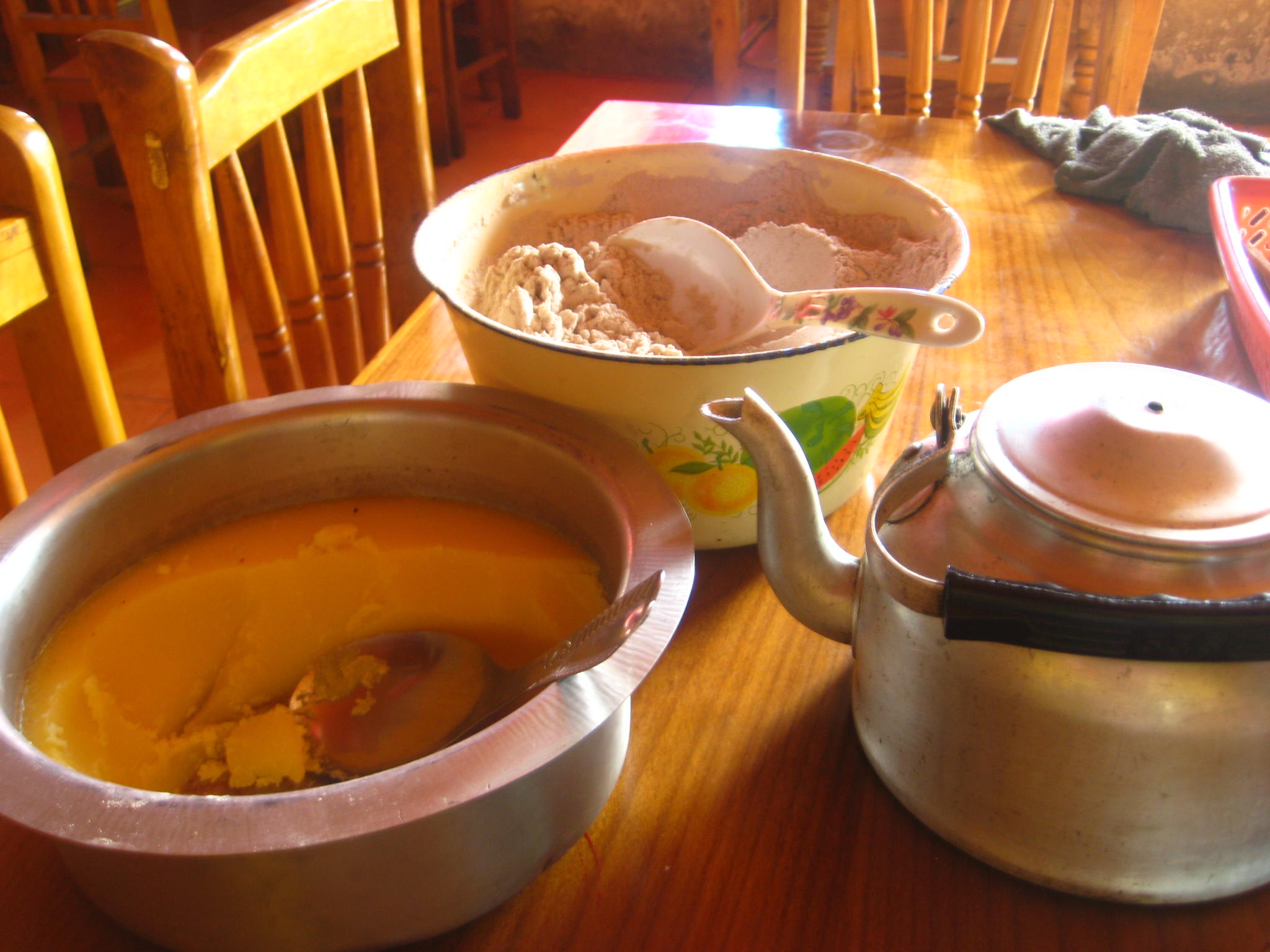There are dozens and dozens of breakfast combos in China that differ widely from each other depending on which part of the country you're travelling in, but they all seem to have three things in common: they're incredibly filling (no sugar-coated puffs of air here), fabulously fresh (often cooked in front of your eyes as soon as you order) and brilliantly cheap (if you pay more than US$1 for your breakfast in China, chances are you're being ripped off).
So before you skulk on down to your hotel lobby to grab what's left of that disappointingly lukewarm morning buffet, check out this delectable bunch of proper Chinese breakfasts:

You get these all over China, but they're at their fluffy best in the city of Hangzhou, where they're known as xiao long bao (小龙包). Stuffed with seasoned pork then steamed in piles of bamboo baskets (which you'll often see stacked up by the restaurant entrance), these are best eaten with a bowl of savoury porridge, usually couscous porridge (xiao mi zhou; 小米粥) or rice porridge (da mi zhou; 大米州). And the dip is all-important. Some Chinese swear by soy sauce. Others never dip their dumplings in anything but the best vinegar.
No one pretends fried dough sticks are healthy, but millions of Chinese people swear by them come early morning. They are nothing more than strips of dough dunked in a huge vat of boiling oil and fried until crispy, but they're so tasty you'll sometimes see locals getting through half a dozen at a time. Again, you'll find these all over China. In fact, you'll find them at breakfast tables right across Southeast Asia too. Best washed down with a warming cup of hot soy milk.

Most Westerners are familiar with wonton soup, but few realise it's slurped down for breakfast over here. A fragrant, watery soup, wonton is filled with bite-sized boiled dumplings and dozens of the tiniest shrimps you can imagine. Best eaten with something dry and filling, like a sesame seed bun or a boiled egg or, if you're crazy, both.

Often sold off the back of cycle rickshaws or from a hole-in-the-wall snack stall, this is a favourite for those who only have time for breakfast on the run. Jian bing are savoury, spicy pancakes that are sprinkled in herbs and finely chopped spring onions before being folded around a deep-fried crispy slice. A Tianjin speciality, but found all over north China.

Almost everything about Tibetan China is different from the rest of the country; the landscape, the people, the culture, the customs. No surprise then that the food in China's far west is a world apart too. Stay the night in a monastery and chances are you'll end up with tsampa for breakfast. It looks like a bowl of sawdust at first, but mixed carefully together with yak butter and butter tea it becomes a highly nourishing, highly filling paste which after a few weeks on the road out this way becomes surprisingly addictive. If you need some help with how to mix your tsampa, read up with my how-to.
Tsampa is best eaten with yak butter tea, which is lucky because that's often all there is to drink in Tibet.